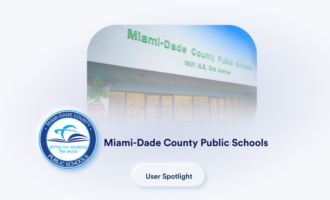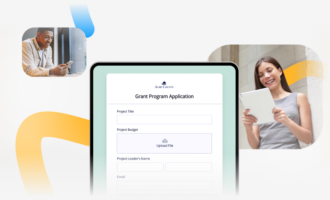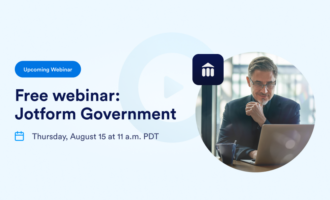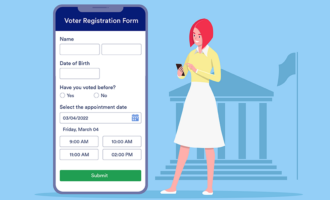Improving government transparency best practices
- Facilitate transparency with the right technology
- Create a culture of transparency
- Use language carefully
- Provide an avenue for feedback
- Communicate through multiple channels
Over the past several years, the United States has seen an uptick in civic engagement. People want to know what their local, state, and federal governments are doing. They want access to public information about policies, budgets, and politicians so they can hold government officials accountable. Just over half of Americans say they discuss politics with others at least a few times a week, while 18 percent say they talk about politics every day.
Governments at every level can respond to citizens’ concerns by making their operations more transparent. It’s important to not only have policies and procedures about transparency, but also the tools to facilitate it.
In this article, we explore the concept of government transparency and offer ideas around how government agencies can be more open with their constituents. We’ll also share a software solution that can help government offices of any size be more transparent with their citizens.
An overview of government transparency
Government transparency refers to the public sector’s ability to be open and forthcoming about its operations. Transparent governments freely share the facts and processes regarding finances, budgets, projects, policy-making, and anything else that directly impacts the public. Of course, governments need to find a balance between sharing information and addressing the potential security issues that come with sharing too much.
There are many different ways a government can be transparent. These include
- Conducting town hall meetings
- Providing easy access to public records, documentation, and services
- Interacting with citizens regularly
- Maintaining meeting minutes and records
While governments have traditionally handled most of their interactions with businesses and citizens in person, being transparent today involves digital interactions as well. People often refer to the process of modernizing and updating government processes to include digital technology as digital transformation.
Transparency and openness are much easier to achieve when a government agency uses digital services and solutions to run its affairs and share its data. Instead of dealing with stacks of paper records, for example, governments can open up access to certain digital documents simply by setting permissions based on the type of information that’s included in them.
“In my experience, one of the most potent tools for promoting transparency and public engagement is an Open Data Initiative, as exemplified by the City of Detroit under its innovative CIO,” says Justin Insalaco, retired police officer and a strategic adviser to Atlas One, which offers public safety digital communications.
“This kind of program,” he says, “provides access to a wealth of data about various aspects of community life, allowing everyone — from citizens to business enterprises — to analyze and scrutinize government actions, fostering a degree of accountability that we, as citizens, deserve. It also becomes a treasure trove for researchers who can derive insights and innovations from the data, creating an ecosystem of shared knowledge and progress.”
The benefits of government transparency
Creating a transparent government is no easy task. Why should government offices go through the effort of transforming their workflows, policies, and procedures to create more openness with their citizens? There are several advantages to transparency, including
- Building trust with constituents: Citizens may be concerned about mismanagement or negligence if their governments keep them in the dark about government operations. However, a transparent government can reassure the people they serve by giving them an inside look at operations.
- Fostering internal accountability: A transparent government pushes public sector employees to put their best foot forward every day and do their best work. Employees are more likely to be accountable for their actions when they understand that citizens have the ability to see behind closed doors.
- Increasing civic engagement: Public participation in government policy-making ensures that the people have a voice and can speak up to create the change they want to see in their communities.
“A broader discussion around digital communication can’t be overlooked,” says Insalaco. “The world today revolves around our mobile devices. Statistics from the private sector substantiate this: A remarkable 98 percent of push notifications or texts are opened, a figure that far exceeds any other communication medium. When we translate this to government-citizen interaction, the impact on transparency is significant. Imagine reaching nearly all your citizens directly in real time.”
- Facilitating public education: Government operations tend to be complex. Being transparent about how things work helps people learn more about government processes, giving them a better understanding of how and why leaders create certain policies or take specific actions.
Best practices for improving transparency in government
Improving government transparency isn’t achievable in a few days. It takes months of strategic planning followed by careful implementation of technology, processes, and procedures.
Here are five best practices for improving government transparency effectively.
1. Facilitate transparency with the right technology
When shifting to a transparent government, old systems will no longer suffice. Transparent governments require technology solutions that enable information-sharing while keeping tight control of permissions and levels of access. It’s important to make security needs paramount while maintaining the ability to share data.
“The ability to handle crucial documents or transactions digitally not only streamlines processes but also improves accountability and trust,” says Insalaco. “Blockchain, despite its controversial status, holds the potential for establishing foolproof chains of custody and secure voting systems, further cementing transparency and public trust. Publicly accessible dashboards, reflecting the status, budget, and expenditures of government projects can also contribute substantially to transparency, allowing citizens to monitor how their tax dollars are being utilized.”
2. Create a culture of transparency
Often, the move to a transparent government requires a shift in mindset. From the top down, governments need to promote open communication between employees and the public, educate staff about the benefits of transparency, and encourage them to go the extra mile to make it happen. If the culture of the agency doesn’t change, no changes to processes will have an impact.
3. Use language carefully
Some government agencies have their own internal language, which can sound like gibberish to outsiders. In documents shared with the public, it’s important to avoid the use of jargon so the information is clear and the average citizen can understand it.
4. Provide an avenue for feedback
In a transparent culture, information needs to flow both ways. Governments must provide ways for their constituents to offer feedback on government spending, operations, and other areas of concern. Make use of forms, surveys, and meetings to gather questions and ideas.
5. Communicate through multiple channels
While town hall meetings and public records are excellent ways to increase transparency in government, it’s also important to use more modern communication channels such as social media, websites, text messages, and email. This enables citizens to interact with the government in ways that work best for them.
Challenges to overcome with a transparent government
Moving toward transparency is a positive thing; however, certain issues may arise that could make for a rocky road. It’s important for governments to take special consideration with the following:
- Security: While allowing access to internal documents, policies, and workflows can be highly beneficial for governments, cybersecurity and related threats are very real. Governments must be careful when choosing the digital transformation solutions they’ll use to facilitate transparency and ensure those solutions will protect government systems from any security breaches.
- Access and permissions: Not all citizens need access to all documents. With a transparent government, it may be necessary to set specific access controls and permissions for certain public records based on specific criteria. In some cases, citizens may need to request permission to view certain documents.
- Transparency-related resources: Certain public records may not be easy for the average person to understand, such as complex budget reports. Consider assigning some government workers to field questions and simplify certain materials for easier comprehension.
- Ongoing actions: Government transparency is not a one-and-done type of initiative. It’s an ongoing effort that requires constant research and development as new digital transformation technologies emerge. “As an expert, I see AI as a game-changer for public service transparency,” says Insalaco.
“By eliminating human error and bias, AI can offer significant insights. For instance, I’ve been working with a company called Metis Intelligence that uses AI to analyze every frame of body camera footage from law enforcement. This use of AI could provide unbiased, accurate insights into our public safety crisis, furthering transparency and trust. In my perspective, these are the fundamental steps in leveraging digital transformation to foster transparency in our government.”
Jotform Enterprise: Digital transformation support for improving government transparency
If your government agency wants to increase its level of transparency with citizens, consider making Jotform Enterprise part of your digital transformation solution. It can serve as a one-stop shop for all your agency’s data needs, completely transforming the way you gather and share information. As a result, your internal and external processes will become more efficient, secure, and transparent.
Jotform Enterprise enables governments to build workflows and integrations, manage access to data and documents, keep information highly secure, follow regulations, and better serve their constituents. Not only that, but governments can easily migrate their forms, data, and documents to Jotform Enterprise and host data locally.
With Jotform Enterprise, governments can reach the level of transparency they aspire to while still ensuring security and efficiency.
Photo by Anna Shvets




























Send Comment: